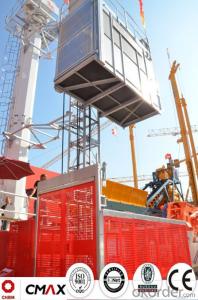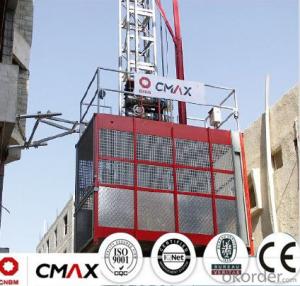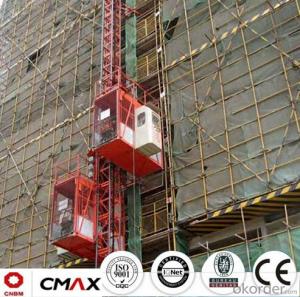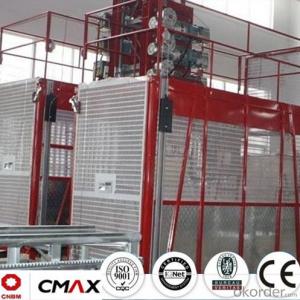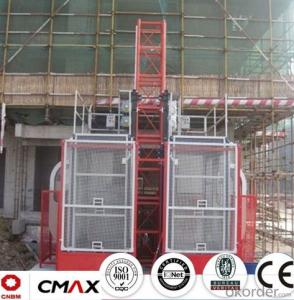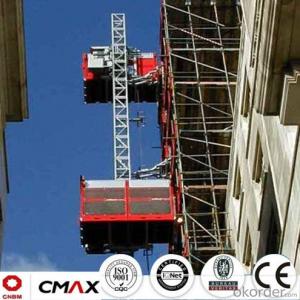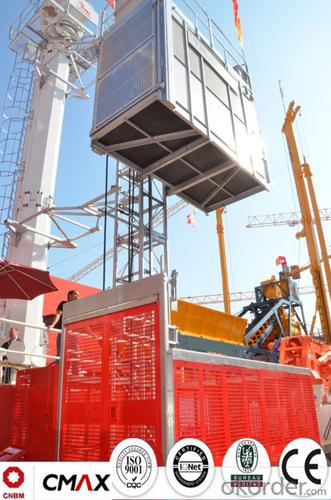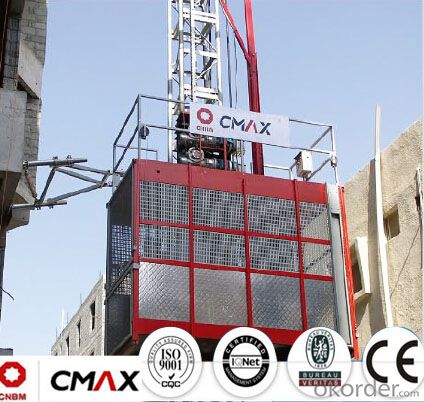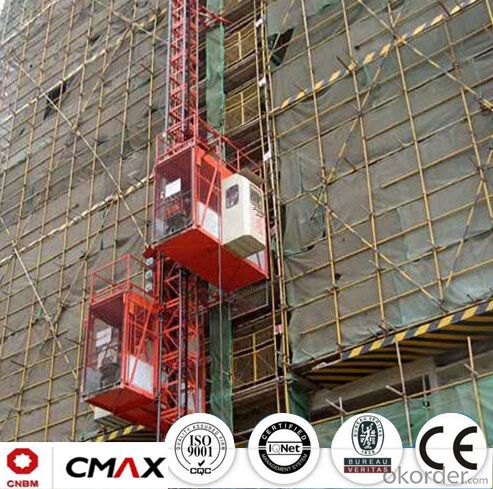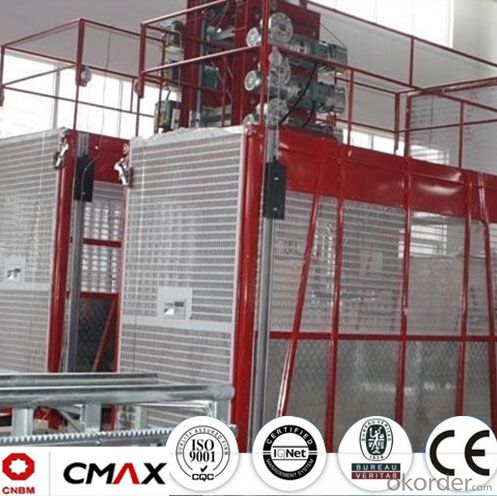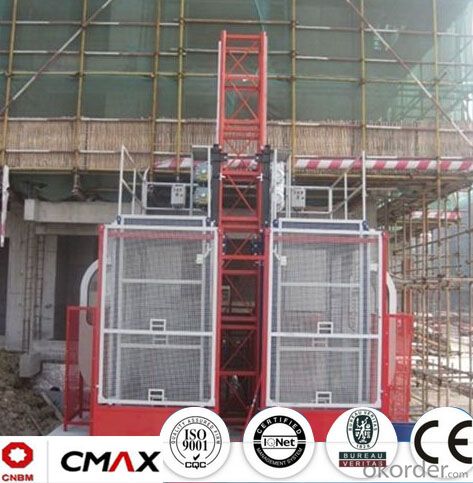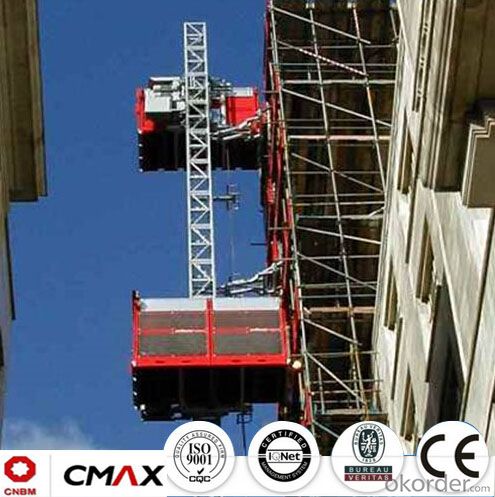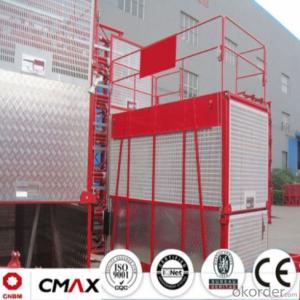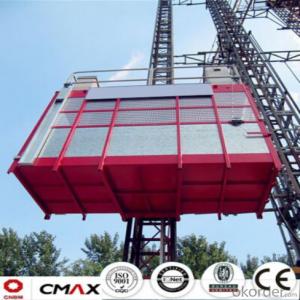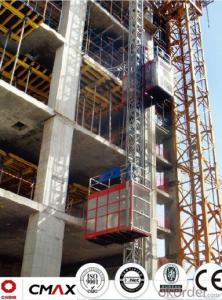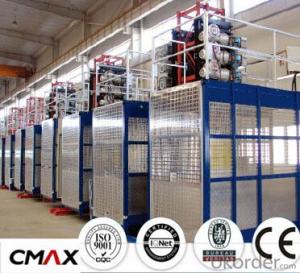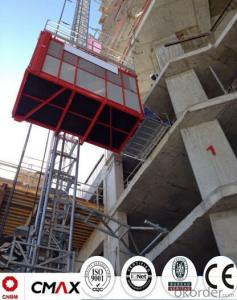Building Hoist Hot Galvanizing Mast Section with 2ton Capacity
- Loading Port:
- China main port
- Payment Terms:
- TT OR LC
- Min Order Qty:
- 1 unit
- Supply Capability:
- 10 unit/month
OKorder Service Pledge
OKorder Financial Service
You Might Also Like
Structure of Building Hoist Description
The hoist can be widely used in industrial and civilian construction, bridge, under well, big chimney as well as shipping industry to carry people and materials. As permanent or semi-permanent equipment, hoist can be used in different sites such as warehouse, high tower, etc.
With the advantages of reliable performance, safety, easy carrying, high adaptability, it can reduce operators’ work intensity.
With many advanced technology integrity, strict control on each making process, high ratio of price and quality, CMAX hoist has become a symbol of lifter with high quality and excellent after-sales service.
Packaging & Delivery of Building Hoist
Packaging: nude and wooded box Delivery: 25-30days
Mains Parts of Building Hoist
1.Metal structure including the mast, tie in and cabin ,could be spay-painted and hot galvanized. Mast section is produced with high quality Q345B seamless steel pipe.
2.Electric parts are all equipped with Schneider , Siemens and other top brands.
3.The electrical system can be adopted with the normal control method and VVVF+PLC control method. Inverter we adopted is from Schneider. Yaskawa and other world famous brand.
4.Cabin exit door adopts ramping type. The ramping door likes a bridge between the building hoist and construction building.
5.The cabin floor is produced from 3MM thickness steel riffled board(Hot dip galvanized), and 15MM thickness wooden board which can reduce the vibration and deformation a lot.
6.Driving unit is adopted the products from ZHANGJIANG and other reputed maker, or from SEW, NORD.
Building Hoist Images



Building Hoist Specification

FAQ of Building Hosit
Q: What is the building hoist main purpose?
A: Building hoist equipped with double or single cabin to transport the materials and labors up and down. It's the ideal construction equipment for vertical transportation in the field of construction.
Q: What is the main structure of building hoist?
A: The P/M construction hoist mainly contains metal structure, driving system, electrical control system, cable guide & protection system, electrical top crane and safety device.
Q: What is the meaning of the building hoist’s code?
A: Take SC200/200 for example: “SC” stands for rack and pinion hoist, “200/200” stands for double cage and capacity is 2 tons per cage. “SC200” stands for single cage and capacity is 2 tons.
- Q: Is it possible to use a single automatic building hoist to lift multiple objects simultaneously?
- <p>Yes, an automatic building hoist can be used to lift multiple objects at once, provided that the combined weight of the objects does not exceed the hoist's maximum load capacity. It is crucial to ensure that the hoist is designed for such operations and that all safety precautions are taken to prevent overloading, which can lead to accidents. The hoist should be equipped with a load limiter to automatically cut off power if the load exceeds safe limits, ensuring the safety of the operation.</p>
- Q: This question asks for the method to determine the lifting capacity of a building hoist.
- <p>To calculate the weight that a building hoist can lift, you need to consider the hoist's rated capacity, which is specified by the manufacturer. This rating is based on safety factors and should not be exceeded. Check the hoist's specifications for its maximum load capacity. Ensure that the weight of the materials being lifted does not exceed this limit. Additionally, consider the hoist's mechanical condition, the strength of the cables, and the stability of the lifting points. Regular maintenance and inspection are crucial to ensure the hoist operates within its safe working load limits. Always follow the manufacturer's guidelines and safety regulations when using a building hoist.</p>
- Q: Does the misuse or incorrect use of lifting equipment pose a risk of injury to workers?
- <p>Yes, improper or incorrect use of lifting equipment can cause serious injury to workers. This can include accidents such as dropping loads, which can lead to crushing injuries or being struck by falling objects. Additionally, improper lifting techniques can lead to musculoskeletal injuries, such as back strains or sprains. It's crucial for workers to be trained in the safe operation of lifting equipment and to follow all safety protocols to minimize the risk of injury.</p>
- Q: Is it possible to use a building hoist to lift multiple items simultaneously?
- <p>Yes, a building hoist can be used for lifting multiple objects at once, provided that the combined weight of the objects does not exceed the hoist's load capacity. It's important to ensure that the hoist is designed for such use and that safety precautions are strictly followed to prevent accidents. The objects should be secured properly to avoid any shifting during the lift, and the operation should be conducted by trained personnel to maintain safety standards.</p>
- Q: This question asks whether a hydraulic building hoist can be used in both indoor and outdoor environments and seeks reasons for its versatility.
- <p>A hydraulic building hoist can be used both indoors and outdoors. These hoists are designed to be versatile and durable, capable of withstanding various weather conditions when used outdoors. They are also compact and can be easily maneuvered in indoor spaces. The primary reason for their versatility is the robust construction and the ability to handle different loads with precision. Additionally, hydraulic systems are less affected by electrical interference, making them suitable for environments with fluctuating power supplies. However, it's important to ensure that the hoist is properly maintained and protected from extreme weather conditions to prolong its lifespan and ensure safety.</p>
- Q: Explain how a lifting platform, specifically a building hoist, operates.
- <p>A building hoist, also known as a construction hoist, is a temporary lifting platform used in construction to lift materials and personnel vertically within a building under construction. It operates by using a motor-driven pulley system that runs on guide rails or tracks. The hoist is attached to the building structure and as the building grows, the hoist is extended upwards. The platform is loaded with materials or workers, and the operator controls the ascent or descent through an electrical switch or remote control. Safety features include limit switches to prevent over-travel, safety catches to stop the platform in case of a cable failure, and interlocks to ensure the platform cannot be operated when the doors are open.</p>
- Q: Is it possible to utilize a building hoist for the purpose of lifting heavy objects or construction materials?
- <p>Yes, a building hoist is specifically designed for lifting large objects and materials in construction settings. These hoists are engineered to handle heavy loads, making them ideal for transporting construction materials, equipment, and other heavy items vertically within a building. They are equipped with safety features and are regulated to ensure they can bear the weight and pressure of the materials being lifted, thus playing a crucial role in the construction process.</p>
- Q: This question asks for guidelines on the safe operation of a building hoist, a device used to lift materials in construction.
- <p>To use a building hoist safely, follow these guidelines: Ensure the hoist is properly installed and inspected by a qualified person. Never exceed the hoist's weight limit. Keep the hoist area clear of obstacles and ensure all safety devices are functioning. Do not use the hoist if there are any visible defects or damage. Always secure the load properly and ensure it is balanced. Never leave the hoist unattended while in operation. Use hand signals or a communication system to coordinate with the operator. Regularly inspect and maintain the hoist to prevent accidents. Always follow the manufacturer's instructions and adhere to local safety regulations.</p>
- Q: Identify the elements that influence the durability and operational lifespan of lifting machinery, specifically focusing on Building Hoists.
- <p>The lifespan of lifting equipment, including Building Hoists, is influenced by several factors: 1) Material Quality: The type and quality of materials used in construction directly affect durability and resistance to wear and tear. 2) Design and Engineering: Proper design ensures optimal performance and reduces stress on components. 3) Frequency of Use: More frequent use can lead to faster wear and tear. 4) Maintenance and Repair: Regular maintenance can extend the lifespan, while neglect can shorten it. 5) Operating Conditions: Environmental factors such as temperature, humidity, and exposure to corrosive substances can impact longevity. 6) Load Capacity: Overloading can cause premature failure. 7) Compliance with Safety Standards: Adhering to safety guidelines can prevent accidents and damage. 8) Technological Advancements: Newer models may have improved features that extend lifespan.</p>
- Q: This question asks if improper functioning or lack of maintenance in hydraulic cylinders can lead to damage.
- <p>Yes, hydraulic cylinders can cause significant damage if they malfunction or are not properly maintained. Malfunctions can lead to leaks, component failure, or even structural damage due to pressure surges. Lack of maintenance can cause wear and tear, leading to reduced efficiency and potential failure. Regular maintenance, including checking for leaks, ensuring proper lubrication, and replacing worn parts, is crucial to prevent damage and ensure the safe operation of hydraulic systems.</p>
Send your message to us
Building Hoist Hot Galvanizing Mast Section with 2ton Capacity
- Loading Port:
- China main port
- Payment Terms:
- TT OR LC
- Min Order Qty:
- 1 unit
- Supply Capability:
- 10 unit/month
OKorder Service Pledge
OKorder Financial Service
Similar products
Hot products
Hot Searches
Related keywords
